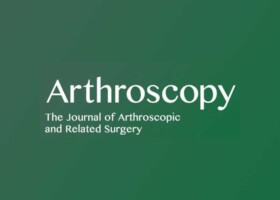
Authors:
Lacheta L, Miles JW, Gao X, Murata Y, Fukase N, Utsunomiya H, Dornan GJ, Tashmen S, Kashyap R, Altintas B, Ravuri S, Philippon MJ, Huard J, Millett PJ
Abstract:
Purpose:
To investigate the effects of combining bone marrow stimulation (BMS) with oral losartan to block transforming growth factor β1 (TGF-β1) on biomechanical repair strength in a rabbit chronic injury model.
Methods:
Forty rabbits were randomly allocated into 4 groups (10 in each group). The supraspinatus tendon was detached and left alone for 6 weeks to establish a rabbit chronic injury model and was then repaired in a surgical procedure using a transosseous, linked, crossing repair construct. The animals were divided into the following groups: control group (group C), surgical repair only; BMS group (group B), surgical repair with BMS of the tuberosity; losartan group (group L), surgical repair plus oral losartan (TGF-β1 blocker) for 8 weeks; and BMS-plus-losartan group (group BL), surgical repair plus BMS plus oral losartan for 8 weeks. At 8 weeks after repair, biomechanical and histologic evaluations were performed.
Results:
The biomechanical testing results showed significantly higher ultimate load to failure in group BL than in group B (P = .029) but not compared with group C or group L. A 2 × 2 analysis-of-variance model found that the effect of losartan on ultimate load significantly depended on whether BMS was performed (interaction term F1,28 = 5.78, P = .018). No difference was found between the other groups. No difference in stiffness was found between any groups. On histologic assessment, groups B, L, and BL showed improved tendon morphology and an organized type I collagen matrix with less type III collagen compared with group C. Group BL showed the most highly organized tendon matrix with more type I collagen and less type III collagen, which indicates less fibrosis. Similar results were found at the bone-tendon interface.
Conclusions:
Rotator cuff repair combined with oral losartan and BMS of the greater tuberosity showed improved pullout strength and a highly organized tendon matrix in this rabbit chronic injury model.
Clinical relevance:
Tendon healing or scarring is accompanied by the formation of fibrosis, which has been shown to result in compromised biomechanical properties, and is therefore a potential limiting factor in healing after rotator cuff repair. TGF-β1 expression has been shown to play an important role in the formation of fibrosis. Recent studies focusing on muscle healing and cartilage repair have found that the downregulation of TGF-β1 by losartan intake can reduce fibrosis and improve tissue regeneration in animal models.
You may request the complete study: Losartan in Combination with Bone Marrow Stimulation Demonstrated Synergistic Effects on Load to Failure and Tendon Matrix Organization in a Rabbit Model
